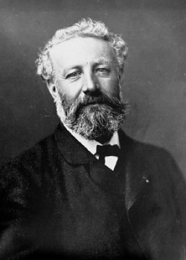The Purchase of the North Pole or Topsy-Turvy (French: Sans dessus dessous) is an adventure novel by Jules Verne, published in 1889. It is the third and last novel of the Baltimore Gun Club, first appearing in From the Earth to the Moon, and later in Around the Moon, featuring the same characters but set twenty years later. Like some other books of his later years, in this novel Verne tempers his love of science and engineering with a good dose of irony about their potential for harmful abuse and the fallibility of human endeavors. In the year of 189-, an international auction is organized to define the sovereign rights to the part of the Arctic extending from the 84th parallel, the highest yet reached by man, to the North Pole. Several countries send their official delegates, but the auction is won by a representative from an anonymous United States buyer. After the auction closes, the mysterious buyer is revealed to be Barbicane and Co., a company founded by Impey Barbicane, J.T. Maston and Captain Nicholl - the same members of the Baltimore Gun Club who, twenty years earlier, had traveled around the Moon inside a large cannon shell. The brave gunmen-astronauts had come out of their retirement with an even more ambitious engineering project: using the recoil of a huge cannon to remove the tilt of the Earth's axis - so that it would become perpendicular to the planet's orbit, like Jupiter's. That change would bring an end to seasons, as day and night would be always equal and each place would have the same climate all year round. But the society's interest lay in another effect of the recoil: a displacement of the Earth's rotation axis, that would bring the lands around the North Pole, which they had secured in the auction, to latitude 67 north. Then the vast coal deposits that were conjectured to exist under the ice could be easily mined and sold. The technical feasibility of the plan had been confirmed by J. T. Maston's computations. The necessary capital had been provided by Ms. Evangelina Scorbitt, a wealthy widow and ardent Maston's admirer (whose more than scientific interest was lost on the obsessive engineer). The cannon needed for that plan would be enormous, much larger than the huge Columbiad that had sent them to the Moon. Once the plan became public, the brilliant French engineer Alcide Pierdeux quickly computes the required force of the explosion. He then discovers that the recoil would buckle the Earth's crust; many countries (mostly in Asia) would be flooded, while others (including the United States) would gain new land... (wikipedia.org)
Hinweis: Dieser Artikel kann nur an eine deutsche Lieferadresse ausgeliefert werden.
Hinweis: Dieser Artikel kann nur an eine deutsche Lieferadresse ausgeliefert werden.









